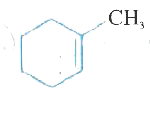Name an alkene which on reductive ozonolysis produces only acetone.
To solve the question of naming an alkene that, upon reductive ozonolysis, produces only acetone, we can follow these steps:
1. Understanding Reductive Ozonolysis:
- Reductive ozonolysis is a reaction where an alkene is treated with ozone (O₃) followed by a reducing agent (like zinc and water). This reaction cleaves the double bond in the alkene and forms carbonyl compounds (aldehydes or ketones).
2. Identifying the Product:
- We need to find an alkene that, when ozonolyzed, yields only acetone (CH₃COCH₃). Acetone is a ketone with the structure where two methyl groups are attached to a carbonyl carbon.
3. Constructing the Alkene:
- To produce only acetone, we need to consider the structure of acetone. The ozonolysis of an alkene will typically yield two products. Therefore, the alkene must be symmetrical such that both cleavage products are the same, resulting in only one type of product (acetone).
4. Drawing the Alkene:
- The alkene that fits this requirement is 2-butene (C₄H₈). Its structure can be represented as:
CH₃−CH=CH−CH₃
- When 2-butene undergoes ozonolysis, it will break down to yield two molecules of acetone.
5. Naming the Alkene:
- The IUPAC name for 2-butene is derived from the longest carbon chain containing the double bond. Since it has four carbon atoms and the double bond starts at the second carbon, it is named 2-butene.
Final Answer:
The alkene that, upon reductive ozonolysis, produces only acetone is 2-butene.
---
- Reductive ozonolysis is a reaction where an alkene is treated with ozone (O₃) followed by a reducing agent (like zinc and water). This reaction cleaves the double bond in the alkene and forms carbonyl compounds (aldehydes or ketones).
- We need to find an alkene that, when ozonolyzed, yields only acetone (CH₃COCH₃). Acetone is a ketone with the structure where two methyl groups are attached to a carbonyl carbon.
- To produce only acetone, we need to consider the structure of acetone. The ozonolysis of an alkene will typically yield two products. Therefore, the alkene must be symmetrical such that both cleavage products are the same, resulting in only one type of product (acetone).
- The alkene that fits this requirement is 2-butene (C₄H₈). Its structure can be represented as:
CH₃−CH=CH−CH₃
- When 2-butene undergoes ozonolysis, it will break down to yield two molecules of acetone.
- The IUPAC name for 2-butene is derived from the longest carbon chain containing the double bond. Since it has four carbon atoms and the double bond starts at the second carbon, it is named 2-butene.
The alkene that, upon reductive ozonolysis, produces only acetone is 2-butene.
Topper's Solved these Questions
- BOOK - MODERN PUBLICATIONCHAPTER - HYDROCARBONSEXERCISE - Conceptual Questions20videos
HYDROCARBONS
- BOOK - MODERN PUBLICATIONCHAPTER - HYDROCARBONSEXERCISE - NCERT FILE (NCERT TEXTBOOK EXERCISE)25videos
HYDROCARBONS
- BOOK - MODERN PUBLICATIONCHAPTER - HYDROCARBONSEXERCISE - UNIT PRACTICE TEST15videos
HYDROCARBONS
- BOOK - MODERN PUBLICATIONCHAPTER - HALOALKANES AND HALOARENESEXERCISE - UNIT PRACTICE TEST12videos
HALOALKANES AND HALOARENES
- BOOK - MODERN PUBLICATIONCHAPTER - HYDROGENEXERCISE - UNIT PRACTICE TEST (for Board Examination)9videos
HYDROGEN
Similar Questions
Knowledge Check
- Question 1 - Select One
 on reductive ozonolysis yeilds A6-oxogeptanalB6-oxoheptanoic acidC6-hydroxyheptanalD3-hydoroxypentanal
on reductive ozonolysis yeilds A6-oxogeptanalB6-oxoheptanoic acidC6-hydroxyheptanalD3-hydoroxypentanal - Question 2 - Select One

On reductive ozonolysis yieldsA6-oxoheptanalB6-oxoheptanoic acidC6-hydroxyheptanalD3-hydroxypentanal - Question 3 - Select One
 On reductive ozonolysis yieldsA2- oxoheptanalB6- oxoheptanoic acidC6- hydroxyheptanalD3- hydroxyheptanal
On reductive ozonolysis yieldsA2- oxoheptanalB6- oxoheptanoic acidC6- hydroxyheptanalD3- hydroxyheptanal
Which alkene on reductive ozonolysis will produce Acetaldehyde only ?
View SolutionBut - 2 - yne on reductive ozonolysis produces
View SolutionReductive ozonolysis of benzene produces
View SolutionAn olefinic compound on reductive ozonolysis produces formaldehyde, acetaldehyde and 1, 3-propanedial. The IUPAC name of the alkene is
View SolutionAn alkene on ozonolysis produces butanone only. The alkene is
View Solution

